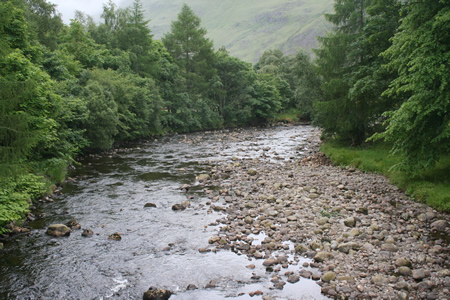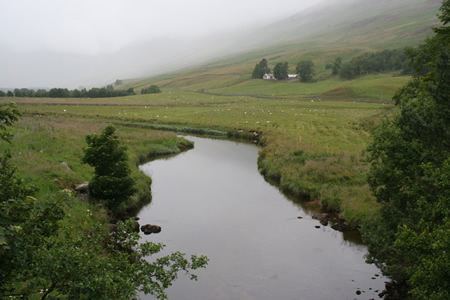These bulletin blogs represent news about Finavon and the South Esk, and my views as a riparian owner. They are not the views of any other organisation, nor are they designed to promote the interests of any individual or organisation other than Finavon Castle Water and factors affecting the fishery. Tony Andrews
Walking down Milton Beat yesterday, across the two bridges and on down to David’s Tree-house, I disturbed some Teal on the wildlife pond and saw at least two salmon preparing to spawn in the tail of Kirkinn, and another one scooted away from beneath the new bridge in the shallow flood channel . Winter is nearly here. The light is dusky, the sun weakening, and hours of daylight reducing noticeably each day. The winter solstice is only 36 days away.
The FCW Beat totals for the season are below: a feature of the season has been how evenly distributed across the 4 beats both salmon and sea trout catches have been. I think the lower catch of sea trout on Castle Beat reflects the lack of night fishing effort there. Perhaps David’s Tree House may be just a mite too comfortable!
| Beat | Salmon & Grilse | Sea Trout |
| Milton | 38 | 28 |
| Castle | 31 | 17 |
| Bogardo | 36 | 24 |
| Indies | 34 | 32 |
Pools Totals
| Bridge | 5 | 2 |
| Tyndals | 8 | 2 |
| Willows | 7 | 15 |
| Upper Boat | 3 | 1 |
| Volcano | 7 | 3 |
| Lower Boat | 3 | 2 |
| Flats | 5 | 3 |
| Craigo | 2 | 1 |
| Red Brae | 15 | 4 |
| Kirkinn | 5 | 4 |
| Pheasantry | 4 | 3 |
| Nine Maidens | 2 | 2 |
| Beeches | 3 | 3 |
| Haughs | 9 | 6 |
| Harry’s Bar | 9 | 2 |
| Melgund | 11 | 8 |
| Frank’s Stream | 14 | 14 |
| Indies | 9 | 10 |
| Martin’s Cut | ||
| Tollmuir | 6 | 2 |
| Steps & Toms | 4 | |
| Marcus House | 9 | 6 |
| FCW TOTALS 2011 | 139 | 101 |
Salmon
Best Pool
Red Brae 15
Runner up
Frank’s 14
Sea Trout
Best Pools
Willows 15
Frank’s 15
Most fish
Best Pool
Frank’s 28
Runner up
Willows 22
Best salmon 17lbs Volcano
Best sea trout 4lbs 8oz Frank’s
Salmon killed 20 = 85.62% caught & released. Thank you very much to all those visitors, syndicate members and guests who have shown their commitment to the future of the South Esk’s salmon by returning such a high proportion of their catch. I am of the view that as game anglers we have every right to kill the occasional fish, provided it meets the advice criteria of the Esk Fishery Board. So, well done!
This was a slightly below par season but, in the circumstances with a warm and rather uninspiring autumn, it really wasn’t too bad. Perhaps next year….
During the winter I will review historical catches at Finavon to demonstrate that our spring catches are holding up quite well , despite the big reduction in rod fishing effort in the last six or seven years.
TA

